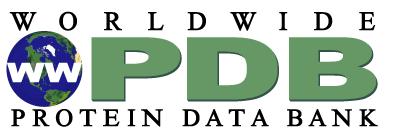Molecule of the Month: Antibodies
Antibodies search for foreign molecules in the blood

Molecular Watchdogs
Getting a Grip
Power in Numbers
This amazingly huge collection of antibodies is created by recombination of genes in lymphocytes, the blood cells that make antibodies. Each lymphocyte creates a different type of antibody, based on how it has recombined its antibody genes. When an antibody encounters a virus or bacterium, the appropriate lymphocytes will multiply, flooding the blood with the particular antibodies needed to battle the invader. These lymphocytes may also make small adjustments on the antibodies they produce, tailoring their antibodies to bind more tightly and more specifically.
Antibody Structure

Attack From Many Angles

Catalytic Antibodies
To make an antibody into an enzyme, we need to find an antibody that stabilizes this intermediate transition state in a similar way. Researchers have done this by finding antibodies that bind to a molecule that mimics the transition state, like the one shown here in green. These antibody-enzymes are termed catalytic antibodies. The catalytic antibody shown here, from PDB entry 1c1e , performs the Diels-Alder condensation reaction shown in the diagram. This is significant because this type of reaction is not performed by any natural enzymes. Antibodies that perform a number of other cleavage and condensation reactions, including reactions that are impossible any other way, may be found in the PDB.
Exploring the Structure
Antibody Flexibility

Six loops (yellow) at the tips of the Fab region (green) form the binding sites of antibodies, enabling each arm to selectively attach to a unique target. These loops are termed “hypervariable” loops because they have very different amino acid sequences. Antibodies are very flexible, allowing the two Fab arms to find neighboring sites on a target, such as the surface of a virus. This flexibility makes it difficult to study intact antibodies. Most of the hundreds of antibody structures available at the PDB are fragments of antibodies, typically of just the Fab arm with the specific binding pocket. Three examples of intact antibodies are shown here (PDB entries 1igt, 1igy, and 1hzh). Notice how the Fab arms are joined to the Fc domain (blue) through flexible hinge regions (turquoise). In addition, antibodies are glycoproteins and incorporate carbohydrates (white) to stabilize the structure of the Fc and hinge regions.
Select the JSmol tab to explore these structures in an interactive view.
This JSmol was designed and illustrated by Xinyi Christine Zhang.
Related PDB-101 Resources
- Browse Immune System
- Browse Nanotechnology
- Browse Nobel Prizes and PDB structures
References
- David R. Davies & Susan Chacko (1993): Antibody Structure. Accounts of Chemical Research 26, pp. 421-427.
- Life, Death and the Immune System, a special issue of Scientific American, September 1993.
- David R. Davies, Eduardo A. Padlan & Steven Sheriff (1990): Antibody- Antigen Complexes. Annual Review of Biochemistry 59, pp. 439-473.
September 2001, David Goodsell
http://doi.org/10.2210/rcsb_pdb/mom_2001_9


